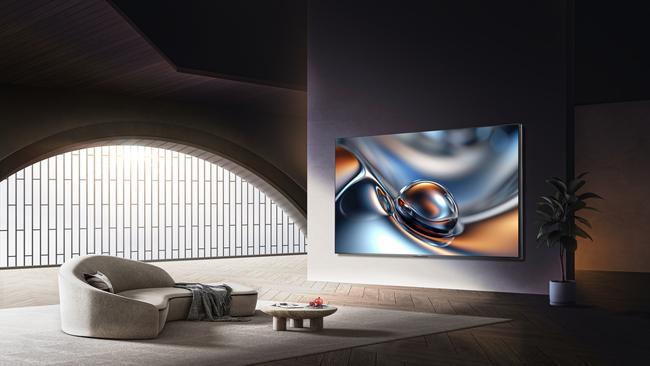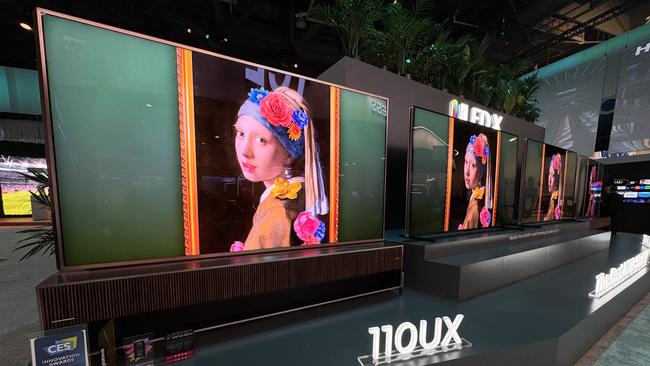Hisense 110UX review: When it comes to TVs, is bigger always better?
As technology evolves, the majority of things have gotten smaller or at least more compact. But TVs have grown in the opposite direction, now as big as the walls in your home.

Is bigger always better?
Intrigued to find out, we took a seat on a sofa in front of Hisense’s latest but maybe not the greatest enormous TV. The 110UX.
As technology evolves, the majority of things have gotten smaller or at least more compact. But TVs are the exception, every year growing in size, with the majority of tech companies confident people will buy them.
That’s at odds with homes in a lot of countries and even some of the new apartments you find in Sydney but hey, no complaints from us.
Hisense is slowly but surely making a name for itself in the big TV department, coming out with something bigger and bolder every year at CES. This year it even trumped the 110UX, the subject of this review, with a 136-inch model called, wait for it, the 136MX.
But before that one reaches the market, come along and take a seat on this sofa with us, and have a go at the 110-inch model.
Got $25,000 to spare? This fancy new number could be yours.
And with that, you’ll be getting access to the company’s MiniLED X technology, which does a pretty good job at highlighting the contrast on screen.
It’s also a little better than previous models at reducing glare, by as much as 20 per cent, which is incredibly important when you’re dealing with a TV that’s far bigger than the average window in an Australian home. We tested it and while it has some impact, it wasn’t that distracting so it’s a thumbs up from us.
As far as the screen goes, there are what Hisense describes as 40,000 full array local dimming zones to deliver up to 10,000 nits of peak brightness.

What tech is behind the screen? Quantum Dot Colour technology, which allows colours to appear 25 per cent richer. That’s something we can agree on.
Was it the best picture we’ve ever seen on TV? No – that’s a crown we’ll reserve for Samsung’s S95D OLED TV, which at 77 inches was quite a bit smaller but mightier in picture.
Organic light-emitting diode or OLED technology allows each individual pixel on the screen to light up or dim and removes the need for a backlight whereas Mini LED uses thousands of little backlights on an LCD panel.
But was it up there? Absolutely yes. The colour is so rich and the size is so large that some images can send a shiver down your spine.
At least, that was the case in an episode of Yellowstone, when a horse trampled past and let out a loud “neigh”. That gave us goosebumps.
Similarly, when we watched a man jump from building to building, the image clarity and crisp sound was enough to conjure up that tingling sensation in our feet and make us take a big gasp, as if we were the ones jumping across multistorey towers, hundreds of metres in the air.
One feature we’ve long enjoyed about Samsung is its solar-powered remote controls. Hisense has employed similar tech, only its remote control, much like the size of the TV, is huge. That’s a plus, as some readers have pointed out, given it’s less likely to get lost or slip down the cracks of a lounge chair.
Stan has also found a home on the remote in the form of a dedicated button. Nice.
How does it sound? Not bad at all, especially given its size.
Much like Hubble Glass, Hisense has forgone a super slim design and instead opted for something more sizeable that allows it to pack multi-directional speakers in the back.
It offers a pretty decent surround sound for a standard TV without the additional help of a soundbar – but if you were spending $25,000 on a TV, surely you’d pick up one and get the best sound you can?
The verdict? If my local pub had one of these on the wall I’d be a regular and probably far more into sports.




To join the conversation, please log in. Don't have an account? Register
Join the conversation, you are commenting as Logout